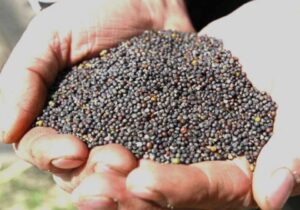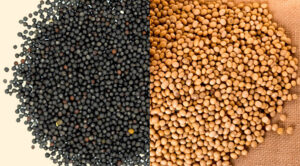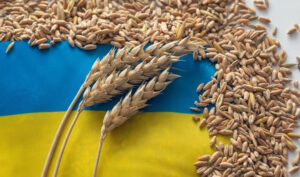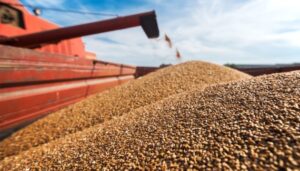
Agroholding Agrotrade has launched a support program for soybean and rapeseed producers in the 2025 season amid regulatory changes and the introduction of export duties, the agroholding’s press service reported.
According to the report, Agrotrade will help farmers enter foreign markets directly, without intermediaries, and maintain profitability. Agricultural producers are exempt from paying such duties if they sell for export. The program aims to help producers sell their crops more profitably by adapting to new market conditions.
“If a producer sells soybeans or rapeseed to a domestic intermediary for one hryvnia, the intermediary, in turn, exports the product and receives foreign currency. With the introduction of export duties, this model loses its economic efficiency for producers, as the intermediary will offer a lower price to compensate for the duty costs. Instead, the producer can now sell their products directly abroad and earn more,” explained Andriy But, director of the foreign economic activity department at Agrotrade.
The agricultural holding company has offered producers full support for export agreements, from the conclusion of export contracts to logistics and document processing, as well as step-by-step advice in the form of an action algorithm so that producers understand each stage.
The program will be available to all regions of Ukraine. The minimum batch size is 200 tons.
“The Agrotrade Group is actively developing its export business and improving logistics to create new opportunities for Ukrainian agricultural producers. We are paving the way for direct, transparent, and profitable cooperation — helping producers adapt to changes, maintain profitability, and gain knowledge and the ability to export independently and receive foreign currency earnings,” the agricultural holding concluded.
The Agrotrade Group is a vertically integrated holding company covering the entire agricultural cycle (production, processing, storage, and trade in agricultural products). It cultivates over 70,000 hectares of land in the Chernihiv, Sumy, Poltava, and Kharkiv regions. Its main crops are sunflower, corn, winter wheat, soybeans, and rapeseed. It has its own network of elevators with a total storage capacity of 570,000 tons.
The group also produces hybrid seeds of corn, sunflower, barley, and winter wheat. In 2014, a seed plant with a capacity of 20,000 tons of seeds per year was built on the basis of the Kolos seed farm (Kharkiv region). In 2018, Agrotrade launched its own brand, Agroseeds.
The founder of Agrotrade is Vsevolod Kozhemyako.

The Verkhovna Rada has supported a bill to introduce a 10% export duty on soybeans, kohlrabi and rapeseed (crushed and uncrushed) with an annual 1% reduction in the rate by 2030, to 5%, MP Serhiy Labaziuk (For the Future parliamentary faction) said in a telegram channel.
The MP added that at the same time a special fund will be created – the State Fund for Support of Agricultural Producers, which, given the existing export volumes (without adjustment for a 10% decrease in value/volumes) of oilseeds, will amount to almost $500 million.
“But with the increase in processing, changes in export prices, and a decrease in the volume of raw materials, revenues will fall. And it will be difficult not to give part of the revenues to the state budget. Therefore, if we manage to raise UAH 3-5 billion for the fund, it will be a victory,” Labaziuk said.
MP Oleksiy Honcharenko (European Solidarity faction) clarified in a Telegram that 245 MPs supported the draft law.
“This is just a shame. They sneaked in the draft law on industrial pollution – duties for farmers. They promised to serve the people, but they serve schemes,” he commented on the document.
As reported, the “soybean amendments” are changes to the Tax Code of Ukraine introduced at the end of 2017. They concerned the procedure for VAT (value-added tax) refunds for soybean and rapeseed exports.
For several years in a row, Stepan Kapshuk, CEO of the Ukroliyaprom association, proposed to ban the export of 50% of the rapeseed crop from the country to increase the utilization of Ukrainian processing capacities, which, in particular in 2024, were significantly short of raw materials.
Subsequently, Dmytro Kysylevskyi, deputy chairman of the parliamentary committee on economic development, prepared draft law No. 13134, which, with amendment No. 40, provided for the introduction of a 10% export duty on rapeseed and soybeans. He argued that Ukrainian soybean and rapeseed processing plants are underutilized by 35%, and if they are used, Ukraine will receive an additional UAH 7.3 billion in state budget revenues to finance the Armed Forces, and an additional $238 million will allow for the construction of dozens of plants and the creation of thousands of new jobs.
A number of associations criticized the idea of the draft law “On Amendments to the Tax Code of Ukraine on Expanding Patient Access to Medicines Subject to Procurement by a Person Authorized to Make Procurement in the Healthcare Sector by Concluding Managed Access Agreements”, which provided for the imposition of duties on the export of soybeans and rapeseed from Ukraine. According to the business associations, they are discriminatory towards small and medium-sized producers, aim to increase the profits of processors at the expense of small and medium-sized farmers and violate the EU-Ukraine Association Agreement.
On June 18, the Verkhovna Rada did not support this initiative.

In June 2025, the Export Credit Agency (ECA) supported UAH 885.5 million of exports by insuring 11 loans worth UAH 106.4 million issued by Ukrainian banks to entrepreneurs to fulfill export contracts.
According to the ECA website, the agency’s largest partners among banks in this period were Oschadbank (UAH 64.4 million in financing), Creditwest Bank (UAH 20 million), and Pivdenny Bank (UAH 20 million).
In June, exporters in Odesa region (UAH 386.7 million of future export revenues), Kyiv (UAH 232.8 million), and Dnipropetrovs’k region (UAH 153 million) were the most likely to use ECA services.
The largest contracts during this period were for the supply of Ukrainian goods to Switzerland, Estonia, and the Czech Republic, and the most popular export commodity groups were flour, wood products, and ferrous metal products.
The Export Credit Agency of Ukraine (ECA) is a government agency that supports non-resource exports by insuring the risks of enterprises and banks. The agency insures foreign trade contracts, export credits, bank guarantees, and investment loans against war risks.

The US Department of Agriculture (USDA) has lowered its July forecast for Ukraine’s wheat production in the 2025-2026 marketing year (MG, July-June) by 1 million tons compared to the June forecast, to 22 million tons (by 4.35%), while leaving its forecast for corn unchanged and raising its forecast for soybeans by 1 million tons, to 7.6 million tons (by 15.15%).
According to the US agency’s forecast, published on its website, wheat exports from Ukraine have been reduced by 1 million tons to 15.5 million tons, while final stocks have been increased by 0.1 million tons to 1.59 million tons.

The introduction of quotas on Ukrainian oil imports by the European Union in mid-June led to an increase in domestic prices for the product, industry analytical agency Infagro reported on Wednesday.
“In the first two weeks of the quotas, Ukrainian suppliers have already used about 25% of the allocated volume, and demand from European buyers remains high due to the price difference,” analysts said.
They noted that dumping in the trade of Ukrainian butter is causing discontent among Polish producers, which could negatively affect negotiations on further expansion of trade privileges for Ukraine. The European Commission is already taking these signals into account, the report said.
According to experts, preliminary estimates show that despite a pause in exports at the beginning of the month, significantly more of this product was exported from Ukraine in June than in the first quarter on average. The main driver was high export prices: in the EU — $7,300–7,500/ton (FCA), in Moldova — at least $7,000/ton.
At the same time, in the second half of June, domestic prices for oil continued to rise.
“Despite the decline in production compared to May, oil production in July is expected to be significantly higher than last year,” Infagro predicts.

As of July 7, Ukraine had exported 77,000 tons of grains and legumes since the start of the 2025/26 marketing year (July-June), according to the press service of the Ministry of Agrarian Policy and Food, citing data from the State Customs Service.
According to the report, as of July 5 last year, total shipments amounted to 1.131 million tons.
At the same time, in terms of crops, since the beginning of the current season, 25,000 tons of wheat (320,000 tons in 2024/25 MY) and 0 tons of barley (134,000 tons) were exported, while corn exports amounted to 51,000 tons (673,000 tons).
Total exports of Ukrainian flour since the beginning of the season as of July 7 are estimated at 0.8 thousand tons (in 2024/25 MY – 1.8 thousand tons), including wheat flour – 0.8 thousand tons (1.7 thousand tons).